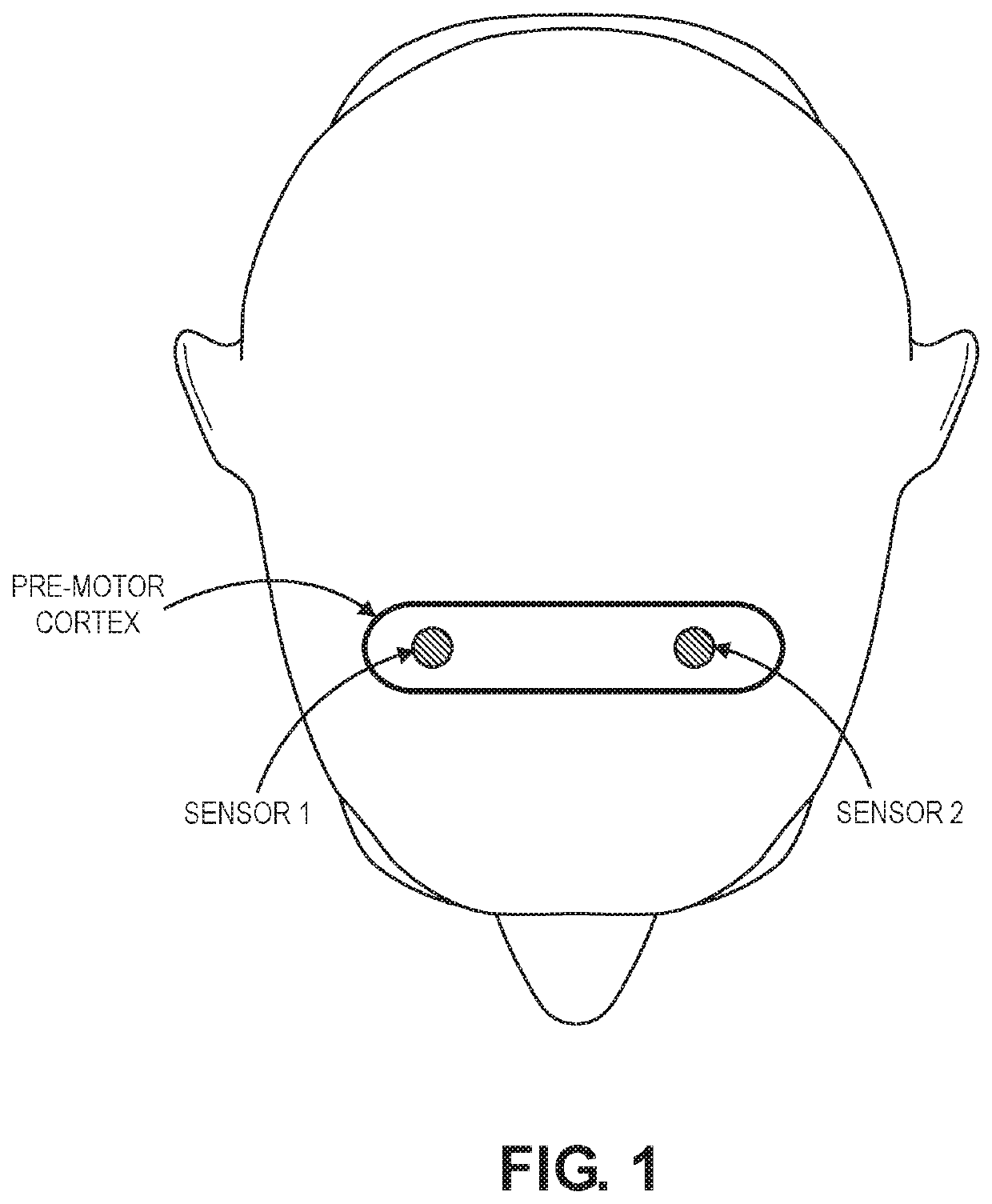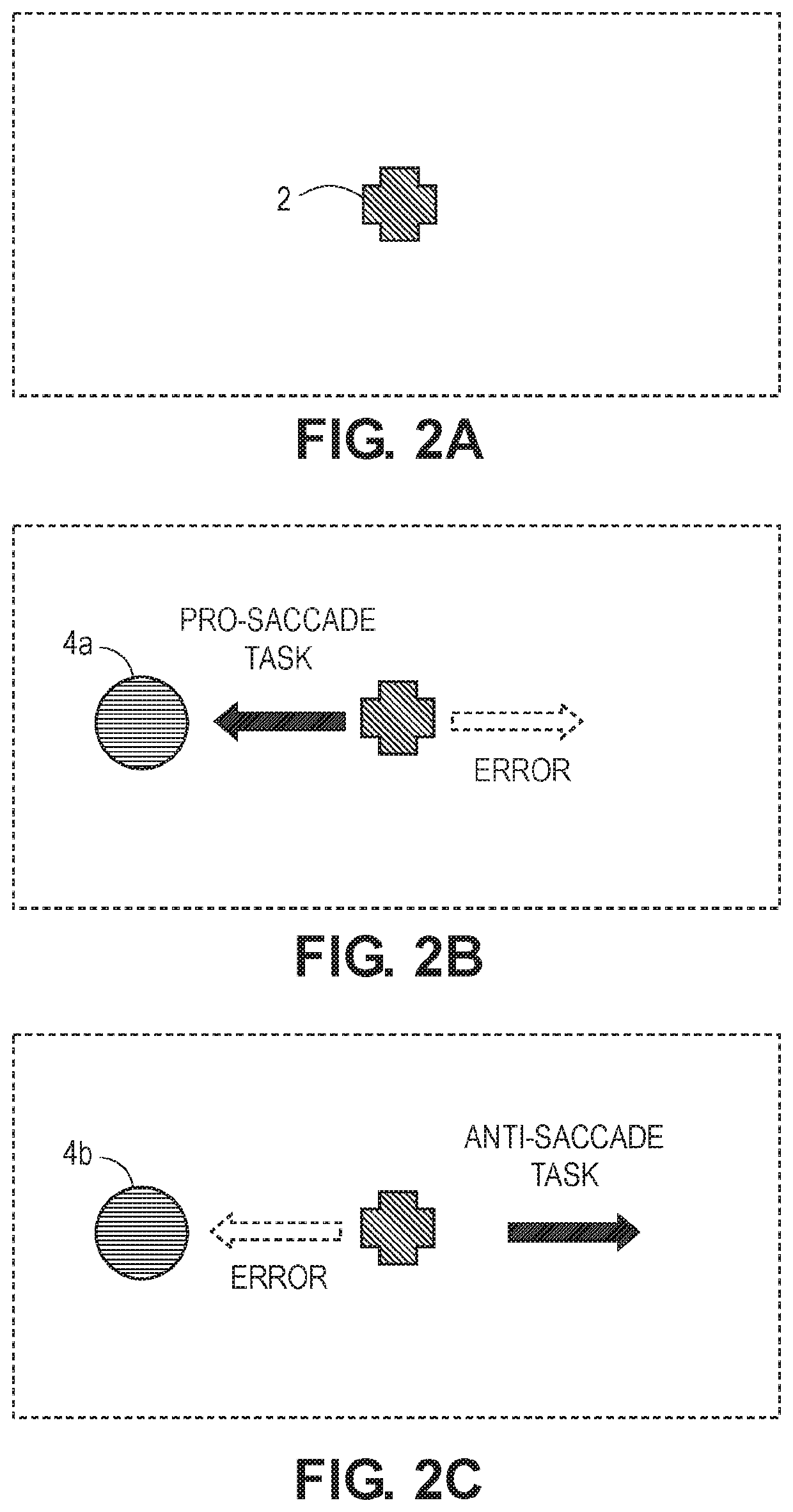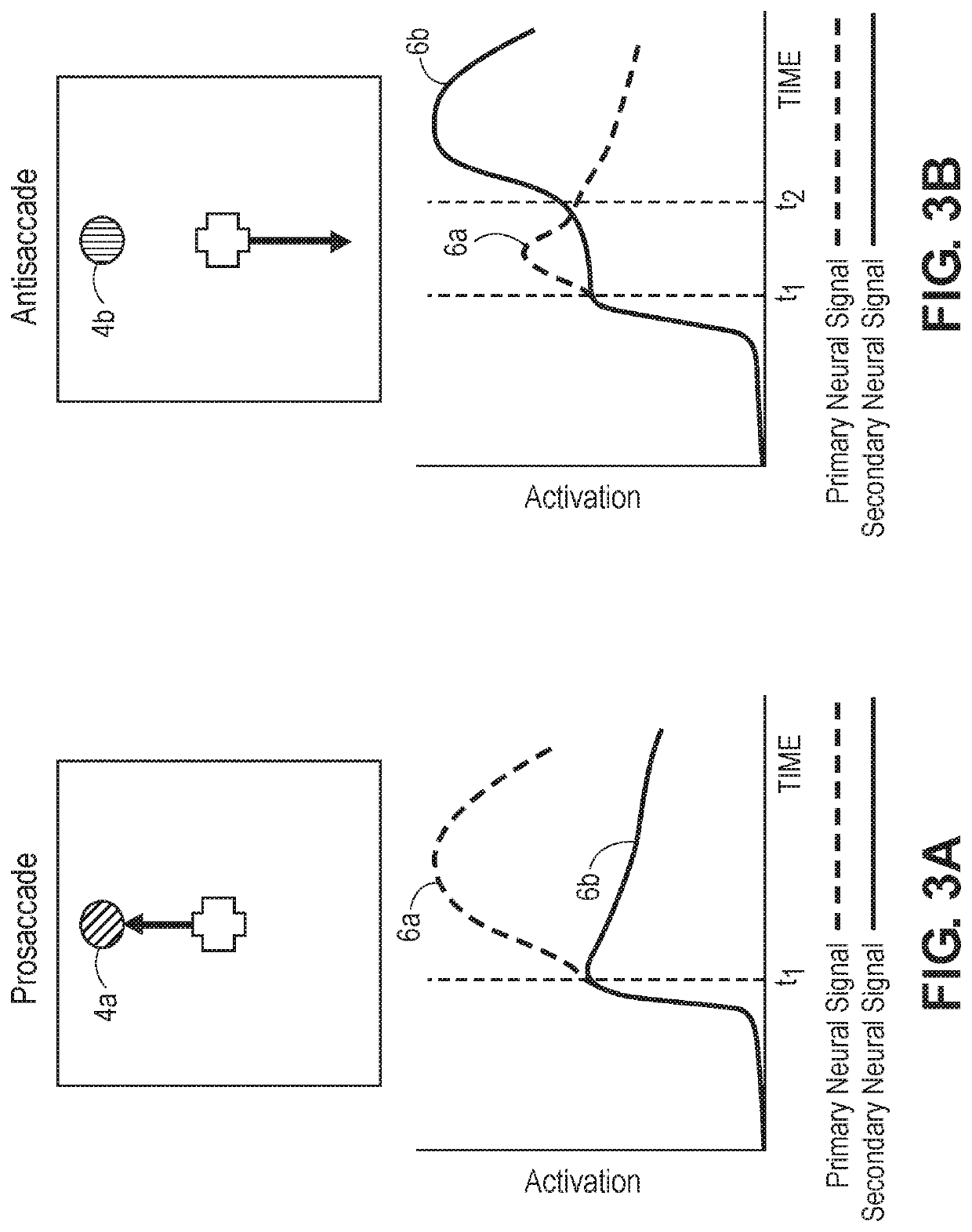Non-invasive systems and methods for detecting mental impairment
a non-invasive and mental impairment technology, applied in the field of non-invasive methods and systems for detecting mental impairment, can solve the problems of major problems such as sleep deprivation, brain injury, stroke or concussion, and mentally impaired persons put their own lives at risk
- Summary
- Abstract
- Description
- Claims
- Application Information
AI Technical Summary
Benefits of technology
Problems solved by technology
Method used
Image
Examples
Embodiment Construction
[0030]The non-invasive impairment detection system described herein is capable of determining a level of mental impairment of an individual by measuring the executive response inhibition of that individual to a stimulus. When functioning properly, the executive response inhibition rapidly cancels motor activity even after its initiation, and thus, is significantly impacted by mental impairment of that individual. In contrast to a reflexive response (e.g., patellar reflex), which involves a bottom-up mechanism in the body that does not engage the executive brain function of an individual, and thus is not significantly impacted by mental impairment of that individual, the non-invasive impairment detection system described herein focuses on an inhibitory reflex response, which involves a top-down mechanism in the body that does engage the executive brain function of the individual. As such, it is believed that measuring the inhibitory reflex response of an individual provides a good in...
PUM
 Login to View More
Login to View More Abstract
Description
Claims
Application Information
 Login to View More
Login to View More - R&D
- Intellectual Property
- Life Sciences
- Materials
- Tech Scout
- Unparalleled Data Quality
- Higher Quality Content
- 60% Fewer Hallucinations
Browse by: Latest US Patents, China's latest patents, Technical Efficacy Thesaurus, Application Domain, Technology Topic, Popular Technical Reports.
© 2025 PatSnap. All rights reserved.Legal|Privacy policy|Modern Slavery Act Transparency Statement|Sitemap|About US| Contact US: help@patsnap.com



